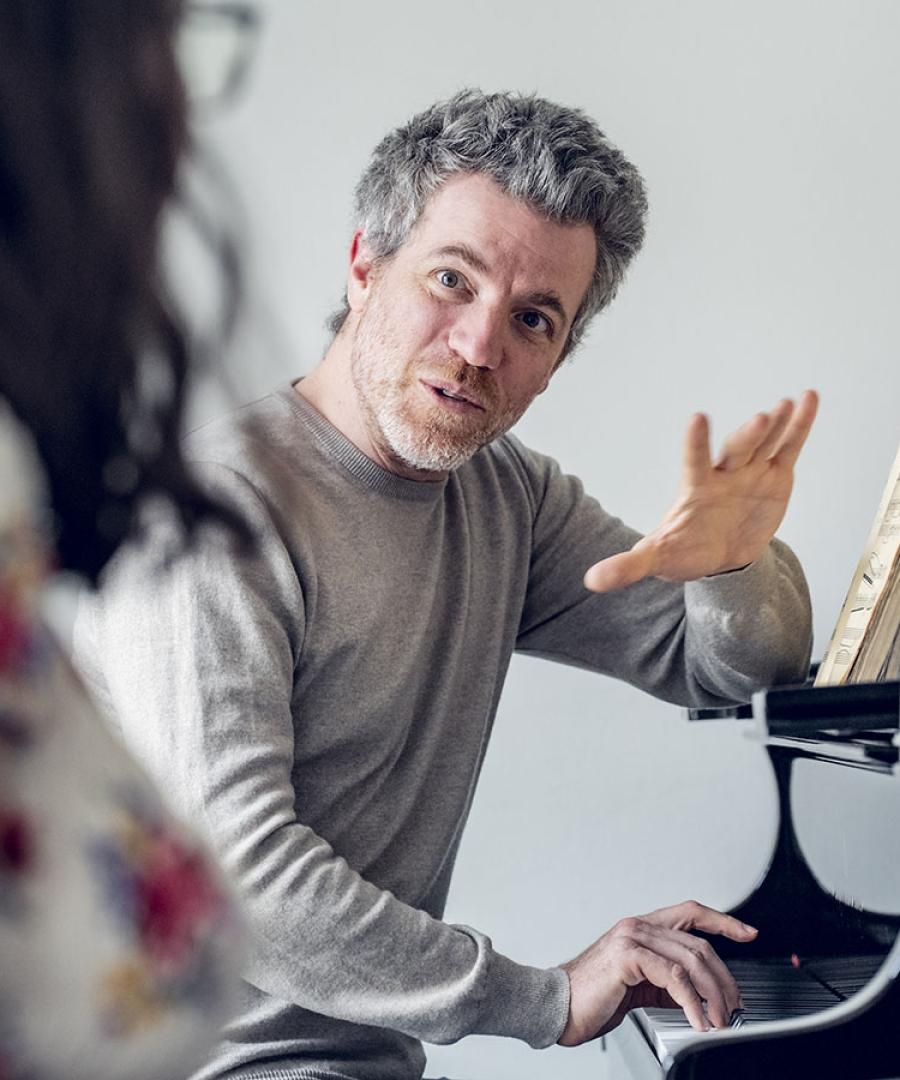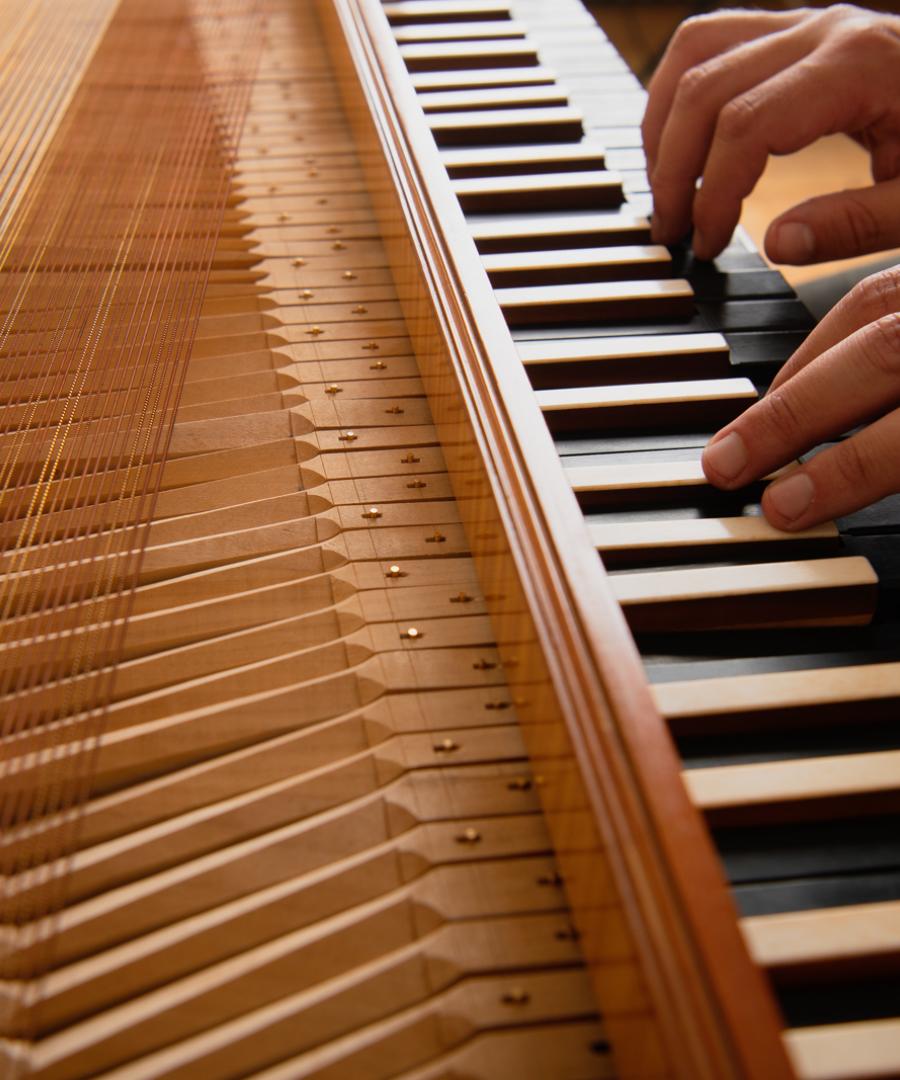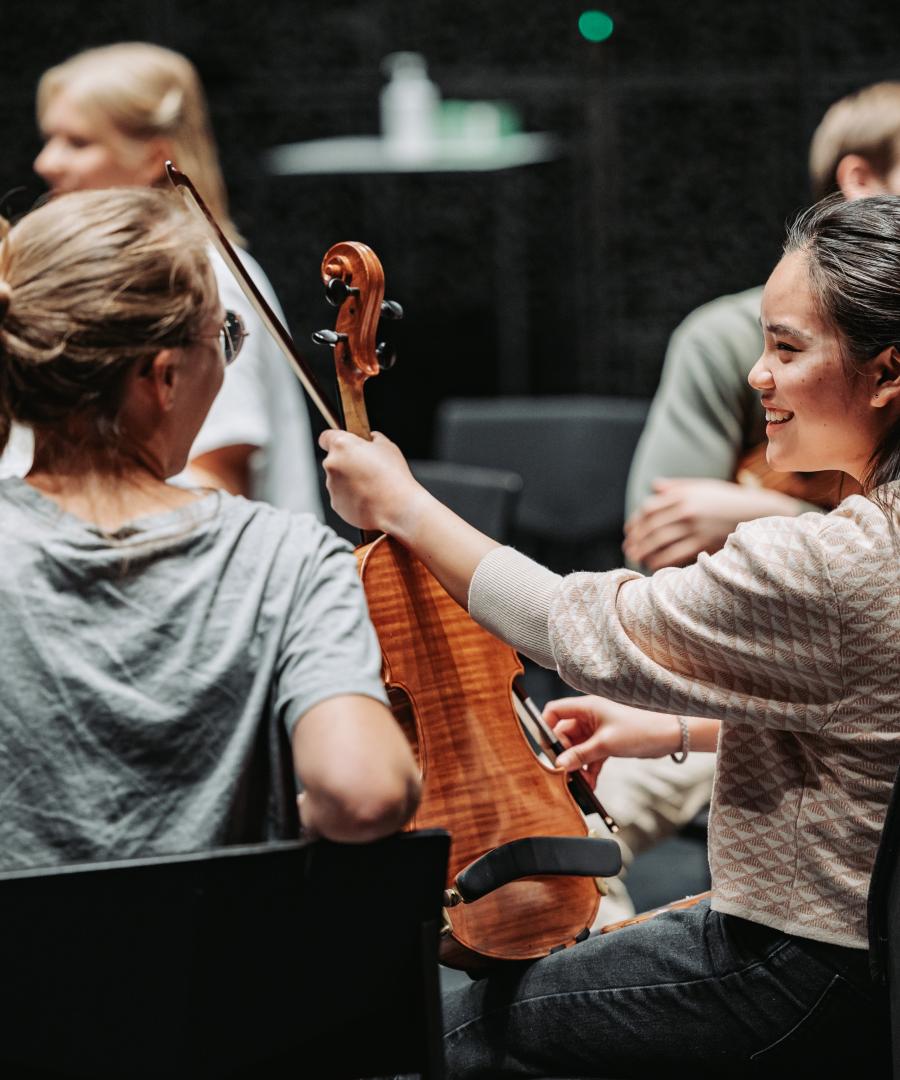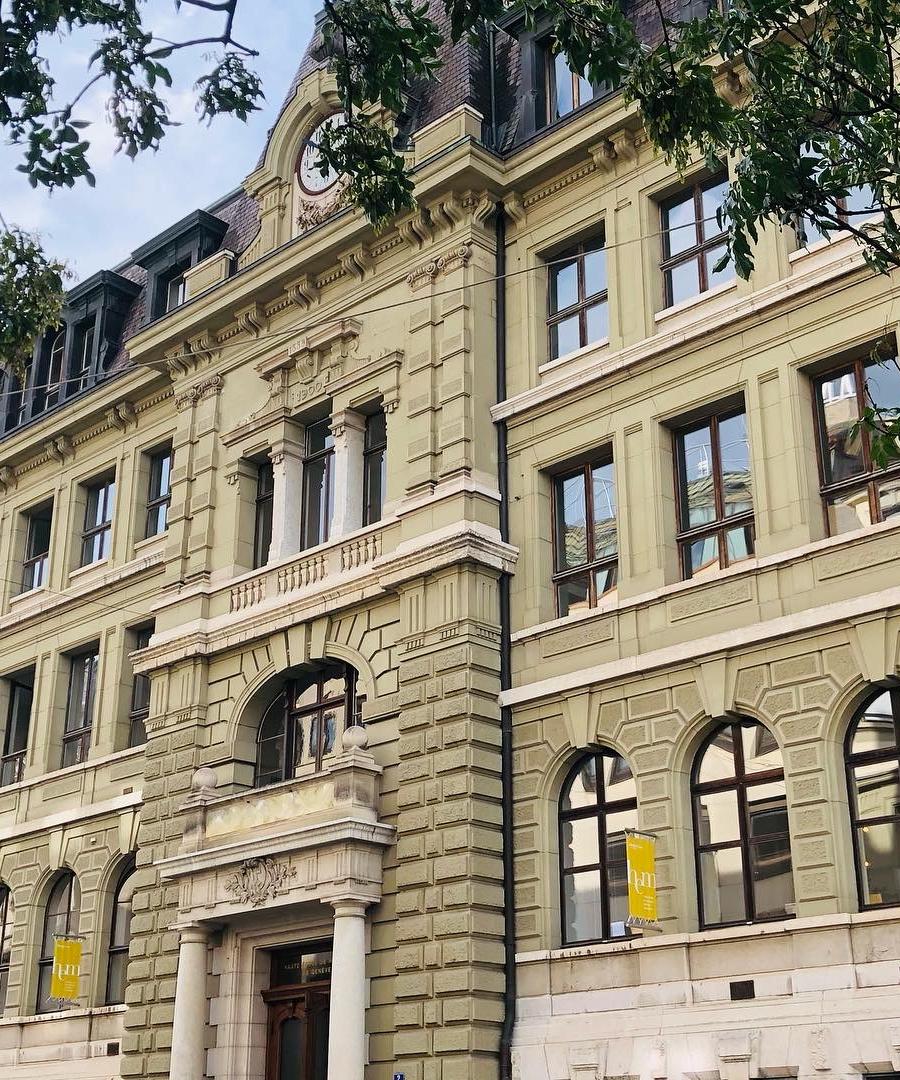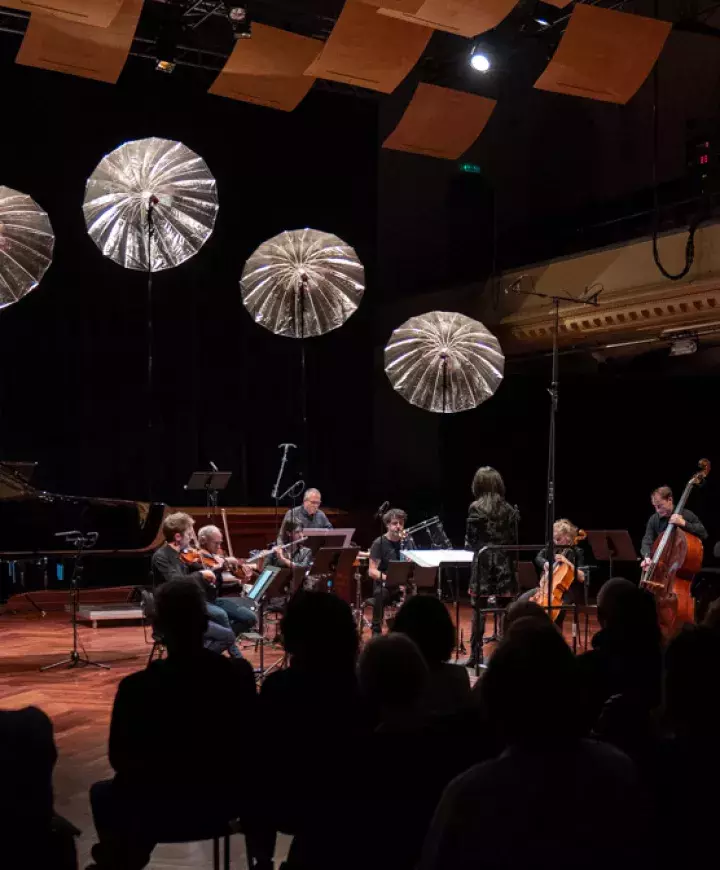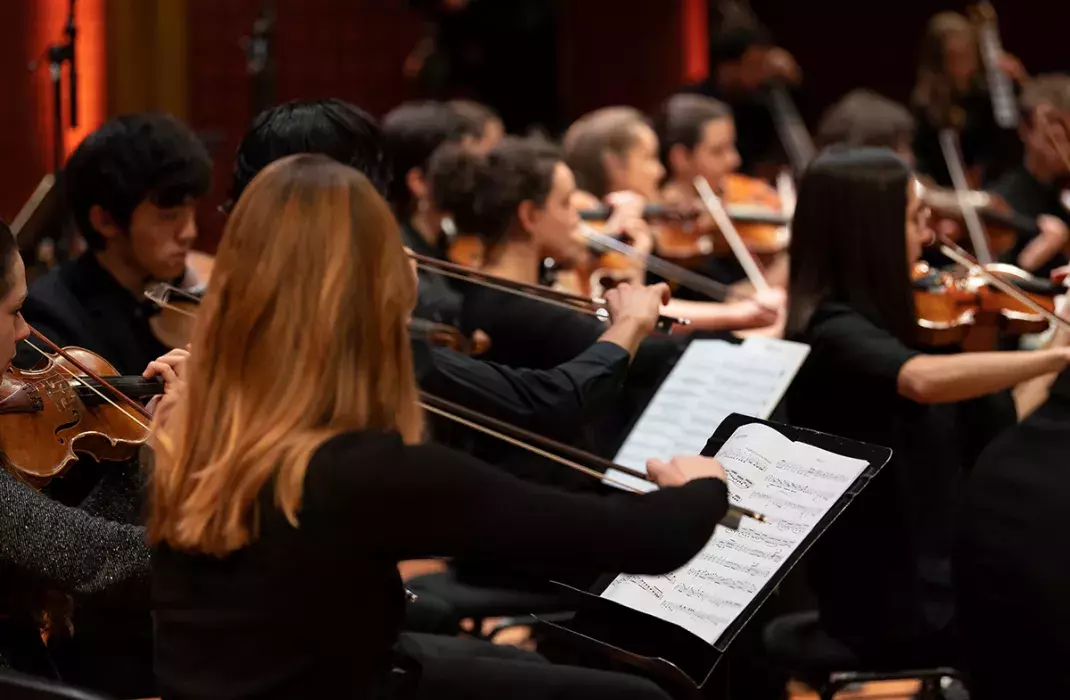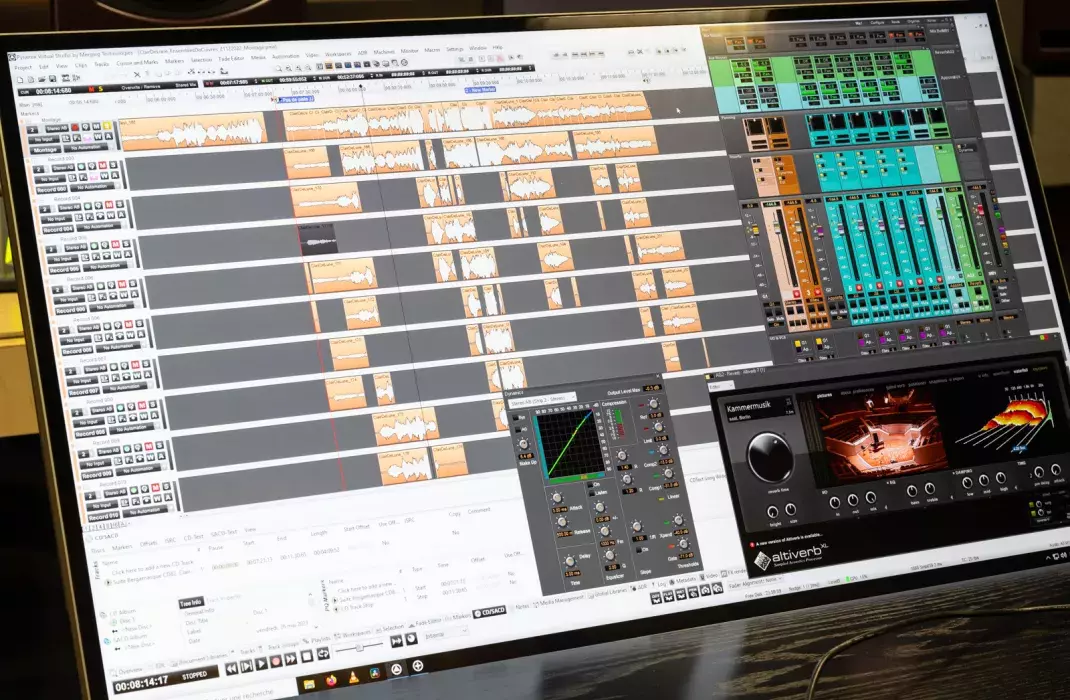- Studies
- Disciplines
- Research
- Events
- The school
Concert, contemporary music option
The pathway of students choosing this option takes as a priority, in the lessons on the main discipline and on ensemble music, on the practice of music in the 20th and 21st centuries. An introduction to mixed music (acoustic-electro-acoustic) is also proposed.
Study plan
Abbreviations :
e = marked exam
p = validation by participation
rs = internship report
ce = co-assessment
cc = continuous assessment
SA = autumn semester
SP = spring semester
A1, A2, etc. = level of the course (first, second year, etc.)
S1, S2, etc. = level of the course (first, second semester, etc.)
Admission criteria
In addition to the general criteria for access to the Master’s, the following special conditions are requested:
- Aura, stage presence
- Ability to communicate musically
These skills are tested in a vocal or instrumental admissions test.
Study programme
Main training
The main training module is centred around individual classes lasting 80 minutes in the main discipline.
Special training
In the special training module, the student perfects their practice in an ensemble, whether in the context of chamber music or in larger ensembles (orchestras or choirs).
Complementary and optional training
In this module, a portion of the free choice is left to the student. Depending on what their Master’s project is and what their professional project is, students can choose between several topics proposed by the HEM’s tutors within the framework of research workshops, between several classes that could supplement their training and between several methods of obtaining validation of their preparation for the profession.
Master’s Project
The Master’s project involves:
- an artistic production at two public recitals,
- a written work showing the musician’s capacity for critical thinking.
